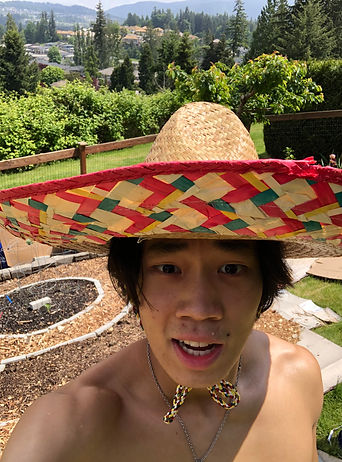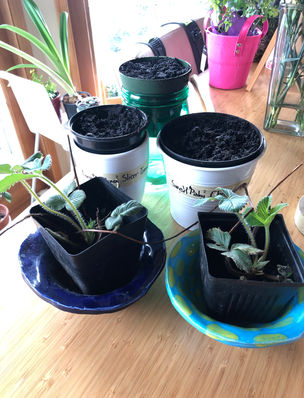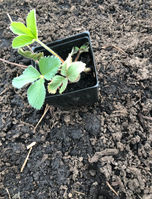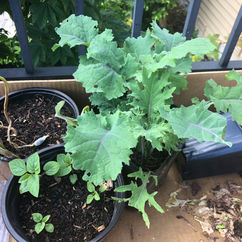
Genesis - Prototype
Capstone/Senior Project Prototype
What Is Genesis?
Genesis is the name of my home garden. I named it Genesis because Genesis means origin or beginning. I want my garden to be the beginning of a big change in food insecurity.
At the end of the Summer, I will calculate the approximate yield per sq ft, and use that knowledge to estimate the amount of area needed to build a garden for the foodbank.

Current Garden Progress (midsummer) (≈300 sq ft)
Where Am I Getting Materials?

Most of my materials are sourced from the wonderful people in our community. People from Buy Nothing groups, Facebook gardening groups, local arborists, and community members. To get started though, I did have to spend some money. So far, I've spent about $200 dollars. If I were to buy a pre-made bed, it'd be around $100 without seeds, soil, compost, woodchips, or fertilizer. I'd say $200 isn't bad.
The goal is to show that a large garden can be built with a small amount of money.
Facebook
Exchange &
Gardening
Groups
Buy Nothing FB Groups
Seeds
FB Exchange, Gardening, Buy Nothing groups
Craigslist or Offerup
Resource Mapping
Fertilizer
Use coffee grounds as fertilizer. Can ask at local coffee shops if needed
Woodchips
Ask local arborists
Faceboook Exchange & Gardening Groups
Buy Nothing FB groups
getchipdrop.com
Soil/Compost
Facebook Exchange & Gardening Groups
Ask local farms for compost (aged 1yr+)
Ask local farms for compost (aged 1yr+)
Building Material
Tools
Ask at local stores (I found REI to be great)
Cardboard
Ask your neighbors
Buy Nothing FB groups
Facebook Exchange & Gardening Groups
Bricks/Pavers
Craigslist & Offerup
Facebook Exchange & Gardening Groups
Timber
Dunnage (timber) from Home Depot
Grow in pallets from FB groups, Home Depot, or Lowes
Facebook Exchange & Gardening Groups
Tires
Buy Nothing FB groups
Local car stores
FB Groups
Shovel
Craigslist/Offerup
Ask to borrow from neighbors
Buckets
Craigslist/Offerup
Buy Nothing FB groups
Gloves
Craiglist/Offerup
FB Groups
Gloves may be best to buy sometimes
Getting Materials
Here are some photos of materials that I've gathered. Some are not pictured, such as free mint or potatoes.
To overcome these challenges, I asked a lot of questions to my mentor, and to the wonderful people on Facebook. While sometimes it was an easy fix (more water), most of the time it wasn't. Most recently, my tomato and pepper leaves started blackening at the edges while maintaining structural integrity. After asking around and doing some research, I found that it could be a fungal infection, bacterial infection, too cold, not enough water, too wet, blight, phosphorous deficiency, too much nitrogen, or specific tomato species coloration. While losses in the garden have been discouraging, Terry encourages me to focus on the process, not the end goal.
Problem Solving
Throughout my project, I've run into a lot of challenges:
-
Seeds not germinating
-
Snow peas getting eaten
-
Compost too rich in nitrogen
-
Strawberries eaten
-
Dropping starts
-
Tomato starts dying
-
Spilling compost and woodchips
-
Facing arachnophobia
-
Seeds taken by ants and birds
-
Finding free materials
-
Pulling my back
-
Injuring my foot
-
Blackening leaves

Composting
A big part of my learning was on composting and global warming. Prior to this project, our family would throw away things like banana peels, eggshells, carrot ends, and orange rinds. However, Terry taught me the importance of composting. This is one of the main reasons why I want to use upcycled materials. I want to prevent usable material from going into the landfill. These food scraps can also be composted into high-quality soil, rather than contribute to carbon emissions.

The benefits of composting displayed in Costa Rica
Some examples of my composting

The hardest part about growing starts is that you grow attached to the plants. Some of my tomatoes developed leaf rot, so I had to prune off the leaves. This was pretty discouraging, and it made me sad that a lot of the plants didn't live. This is, again, why Terry stresses the process, not the end goal.
Growing Starts
To get a headstart on growing and ensure safer development, I started my own tomatoes indoors. I also got some tomato and pepper starts from Sudhir Reddy on Facebook, which I took care of for about a month before planting it outside. Terry also gave me a tomato start.
I planted a total of 15 tomato seeds. 13 seeds germinated, 9 made it past the seedling stage to develop true leaves, 6 made it to the garden, and 5 survived transplant shock.
What's Growing?























































































